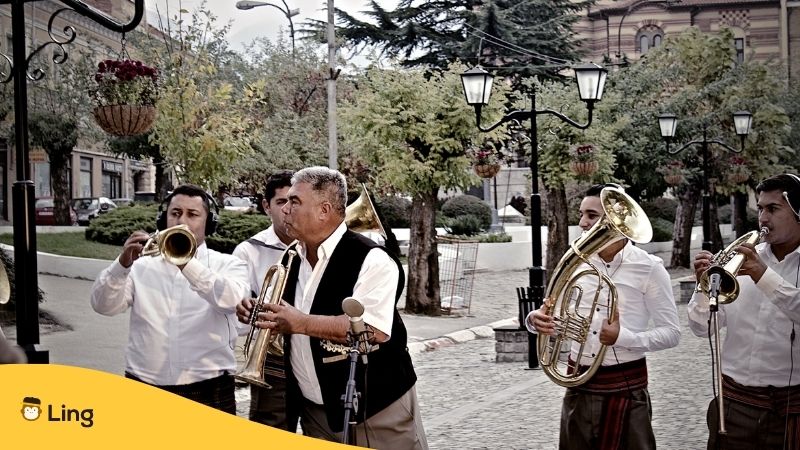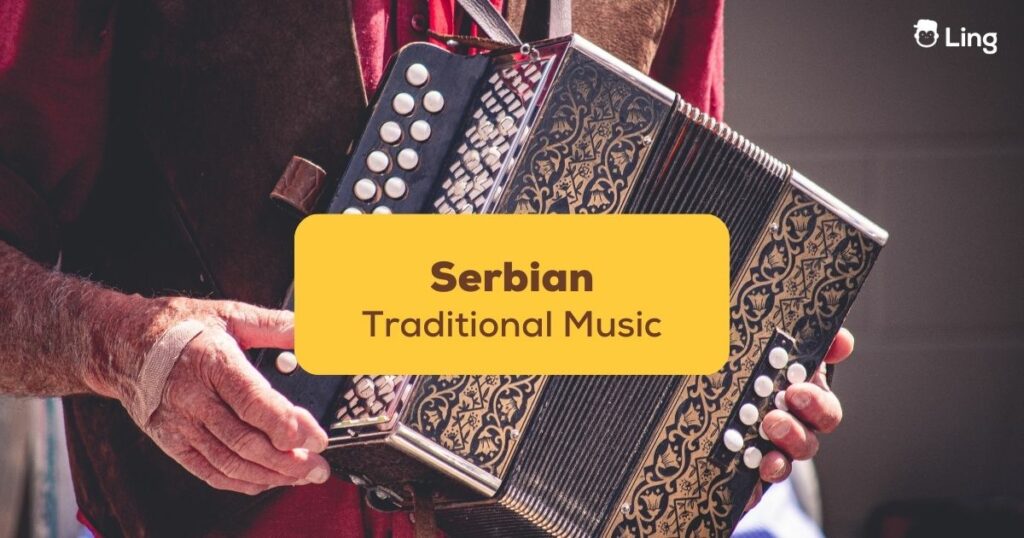Before television and the internet, Serbian traditional music, also known as “narodna muzika,” was the major form of entertainment for the people of this landlocked Balkan nation. Dating back to the medieval period, Serbian traditional music is a unique blend of various styles and influences, including Ottoman, Slavic, and Hungarian, among others. So, let’s take some time out of our busy schedules to explore the fascinating world of Serbian folk music, its origins, its heritage, and its evolution over time.
Origins Of Serbian Traditional Music
The origins of Serbian traditional folk music can be traced back to the medieval days of yore when the Serbian Empire was at its height. During this time, music played an essential role in the cultural and social life of the empire. The royal court had its own musicians, who played a variety of instruments, including lutes, harps, trumpets, drums, and flutes. The church also played a significant role in the development of Serbian music, with hymns and chants being an integral part of religious ceremonies.
Over time, Serbian music evolved, incorporating various influences from neighboring countries and their cultures. The Ottoman Empire, which ruled over Serbia for centuries, had a profound impact on the country’s music and culture. Turkish music, with its unique rhythms and instruments, was introduced to Serbia, and many traditional Serbian songs were influenced by Ottoman music. More recently, traditional folk music has incorporated Western musical influences.
The Evolution Of Traditional Serbian Music
Dodolas
This Serbian folk music tradition dates back to Pagan times. When there has not been enough rain, a group of girls will put on costumes decorated with flowers and leaves before taking to the streets of the village for some singing and dancing. Members of each household will greet the girls by sprinkling water on them. The idea is that this will bring much-needed rainfall to the people of the village.
Starogradska Muzika
Loosely translated as Old Town Music, “Starogradska muzika” was developed in Serbia’s old cities, such as Novi Sad, Nis, and Belgrade. The music deals with lyrical themes such as love, longing, heartbreak, and melancholy.
The instruments traditionally used to express these deep emotions include the Bouzouki, a type of lute more often associated with Greek music, the Zurn, a wind instrument played throughout the Balkans and across central Eurasia, the Duval, which is a type of flute, and the Gaida which is a type of bagpipe. The guitar, mandolin, and accordion are also commonly used by musicians keeping the Old Town Music tradition alive throughout Serbia. In the rural areas of the country, this type of Serbian folk music is known as “izvorna muzika.”

Sevdalinka
Another popular style of traditional Serbian music is “sevdalinka,” a slow and melancholic style that originated in Bosnia and Herzegovina. Sevdalinka songs typically deal with themes of love and loss and are characterized by their emotional intensity. The music is often played on the “sevdah” instrument, a type of lute that is unique to the Balkans. In common with most Serbian folk music styles is the two-beat dance known as “kolo.”
Kolo
During the 19th century, traditional Serbian music continued to evolve, with new styles emerging. One of the most popular styles during this period was “kolo,” a lively and upbeat dance that is still popular in Serbia today. Kolo is typically performed by groups of people who hold hands and dance in a circle to the music. The music is usually played by a band of musicians who use a variety of instruments, including the accordion, tamburitza, and violin.
Ganga
Ganga is a type of traditional Serbian music that originated in the region of Sandzak. It is characterized by its strong vocals and is often sung in groups. This style of music is typically accompanied by the gusle, a type of one-stringed instrument that is unique to Serbia.
Turbo-Folk
In the 20th century, traditional Serbian music continued to evolve, with new styles and influences emerging. One of the most significant developments was the emergence of “turbo-folk,” a blend of traditional Serbian music and modern pop music, and rock music. Turbo-folk songs were popularized in the 1990s and are characterized by their high-energy beats and catchy melodies. Although controversial, turbo-folk remains popular in Serbia today and is played at many weddings and other social events.

Serbian Music Vocabulary
Today, Serbian traditional music can be heard being performed throughout the country. If you are thinking of traveling in Serbia, then it is well worth checking the local listings for a Serbian folk music festival, concert, or venue near where you are staying. And remember the old Serbian saying: “He who sings thinks no evil.”
And to enhance your experience in the country, be sure to use these Serbian words with native speakers.
| English | Serbian | Transliteration |
| Music | Музика | Muzika |
| Melody | Мелоди | Melodi |
| Singer | Сингер | Singer |
| Song | Сонг | Song |
| Rhythm | Ритам | Ritam |
| Harmony | Хармонија | Harmonija |
| Tune | Туне | Tune |
| Musician | Музичар | Muzičar |
| Culture | Култура | Kultura |
| Dance | Данце | Dance |
| Folk music | Народна музика | Narodna muzika |
| Concert | Концерт | Koncert |
| Band | Трака | Traka |
Move To The Rhythm With Ling
Learning the Serbian language is a surefire way to better understand the country’s extraordinary music vocabulary and culture. After all, the subtleties of songs can often be lost in translation. By downloading the Ling app from Google Play or App Store, you will never have a problem translating another language as the Ling app has more than 60 of the world’s languages to choose from. Learning is easy with this app, as every lesson has been carefully prepared just for you by native speakers. With plenty of games, puzzles, and quizzes, this resource also makes learning fun. Why not give it a go today?





























































